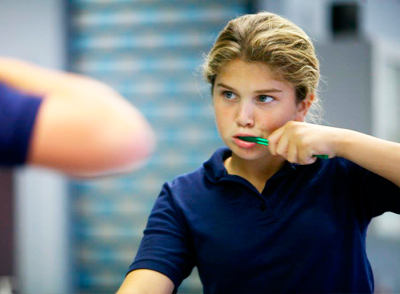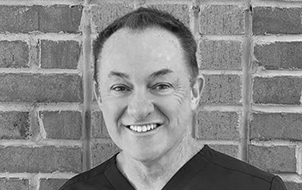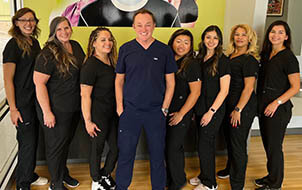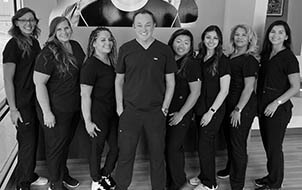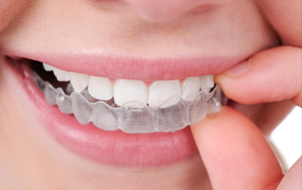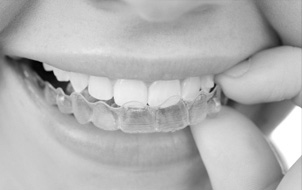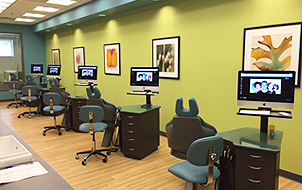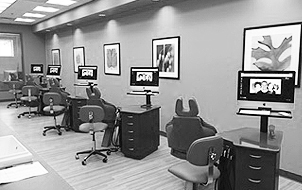Appliance Care & Use
Braces
When you brush your teeth, check to make sure you do not have any loose brackets or bands. A loose bracket may flip or slide on the archwire. If a wire is protruding and irritating, use a blunt instrument (the back of a spoon or a pencil eraser) to carefully push the wire out of the way. If you have a broken or loose appliance, please call our office to determine if your breakage is urgent and requires immediate repair. If a piece comes loose, save it and bring it with you to the office.Elastics
Elastics are rubber bands that are attached to special hooks on the brackets and bands, applying tension and causing the teeth and jaws to move. Elastics can be used in many ways depending upon the treatment goals.Elastics move the teeth in a direction they could not be moved using braces alone. Your teeth and jaws may be tender during the first few days elastics are worn. This is normal, and the tenderness should begin to disappear within a week. If it persists longer, please call our office.
Your elastics may be difficult to put on at first, but this will become easier with practice. You may remove them only when eating or brushing your teeth. Be sure to replace the elastics with new ones immediately after meals and brushing. Wear your elastics as instructed in order to avoid extended treatment times!
Change the elastics routinely even if they are not broken. After a while, elastics lose their strength. Change them after each meal and before bedtime. If one elastic breaks, replace both sides.
Removable Appliances and Retainers
Wear your removable appliances and/or elastics faithfully, as directed by Dr. Mibab and staff. Your estimated treatment time is based on full cooperation with wearing appliances and elastics (rubber bands) as directed.A removable appliance is carefully designed to move or hold your teeth in place. It should be worn according to instructions and brought to each appointment. Wear your appliance at all times, even while you are asleep. It may be removed for eating, while swimming or engaging in vigorous sporting activities. In two to three days, your speech will return to normal with the appliance in place. Avoid flipping your appliance with your tongue. This can cause damage to your teeth or breakage of your appliance.
Keep your appliance away from dogs or cats, as they love to chew on them. Avoid storing it near any source of heat. Do not boil your retainer to sterilize it. An additional charge will be incurred for lost or broken appliances. Please bring your appliances or retainers to all appointments.
Please do not eat any foods that could damage your appliances and delay your treatment. Wear a mouth guard for any activities that might injure your teeth, gums, or cheeks.
Your retainer should be cleaned after each meal and before going to bed. Retainers can best be cleaned with a denture brush and toothpaste . Do not use hot water; it will cause the retainer to warp. Clean the retainer gently, being careful not to bend the wires. Before placing the cleaned retainer in your mouth, be sure you thoroughly brush your teeth. If the retainer or teeth are not kept clean, an irritation of the gums or palate may result.
If plaque builds up on the retainer over time, it will dry and harden like tartar and be difficult to remove with a brush. Denture cleansers like Efferdent or Polident are effective in removing this tartar. Follow the directions on the package. Leave the retainer in the cleanser no longer than 10 minutes; you can do this once a week if needed.
Retainers are made to withstand normal use, but they crack or break if handled roughly. Retainers also can break if they are stepped on, dropped or placed in pockets. If your retainer breaks, you will most likely need to have a new one made for which there is a charge.


 A few years ago, my first son got his braces off and now my 2nd son just got his braces off a few weeks ago.
A few years ago, my first son got his braces off and now my 2nd son just got his braces off a few weeks ago.





